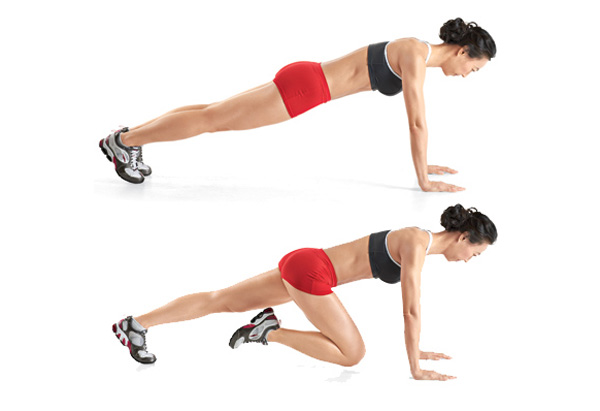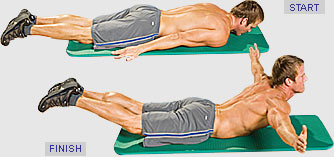Mountain Climbers: Assume a pushup position with your arms completely straight. To start, lift your right foot off the floor and slowly raise your knee as close to your chest as you can. Touch the floor with your right foot and return to starting position. Repeat with your left leg and repeat for 30- 45 seconds. During the exercise your body should form a straight line from your head to your ankles, while bracing your core. Don't change your lower-back posture during the movement phase of the exercise.

Lying Glute Stretch: Lie faceup on the floor with your knees and hips bent. Cross your left leg over your right so that your left ankle sits across your right thigh. Grab your left knee with both hands and pull it toward your chest until you feel a comfortable stretch in your glutes and hamstrings. Hold the stretch for 30 seconds and repeat twice.
Cobra Stretch: Get down on your hands and knees, then stretch your legs outward and lower your hips so that they lie flat on the mat. Separate your legs so that each foot touches each corner of the mat or is pointed toward each corner. Keep your hips and legs flat on the mat. Make sure that your hands are aligned to the width of your shoulders. You should begin to feel pressure in your lower back. Hold your head back so that you are looking up at the ceiling. Make sure that your head isn't pulled back too far. You don't want to feel any pressure in the back of your neck. Just hold your head back enough to glance up at the ceiling. Now take a deep breath and inhale. Hold this position for 30 seconds. Relax your body, then repeat again for another 30 seconds.



